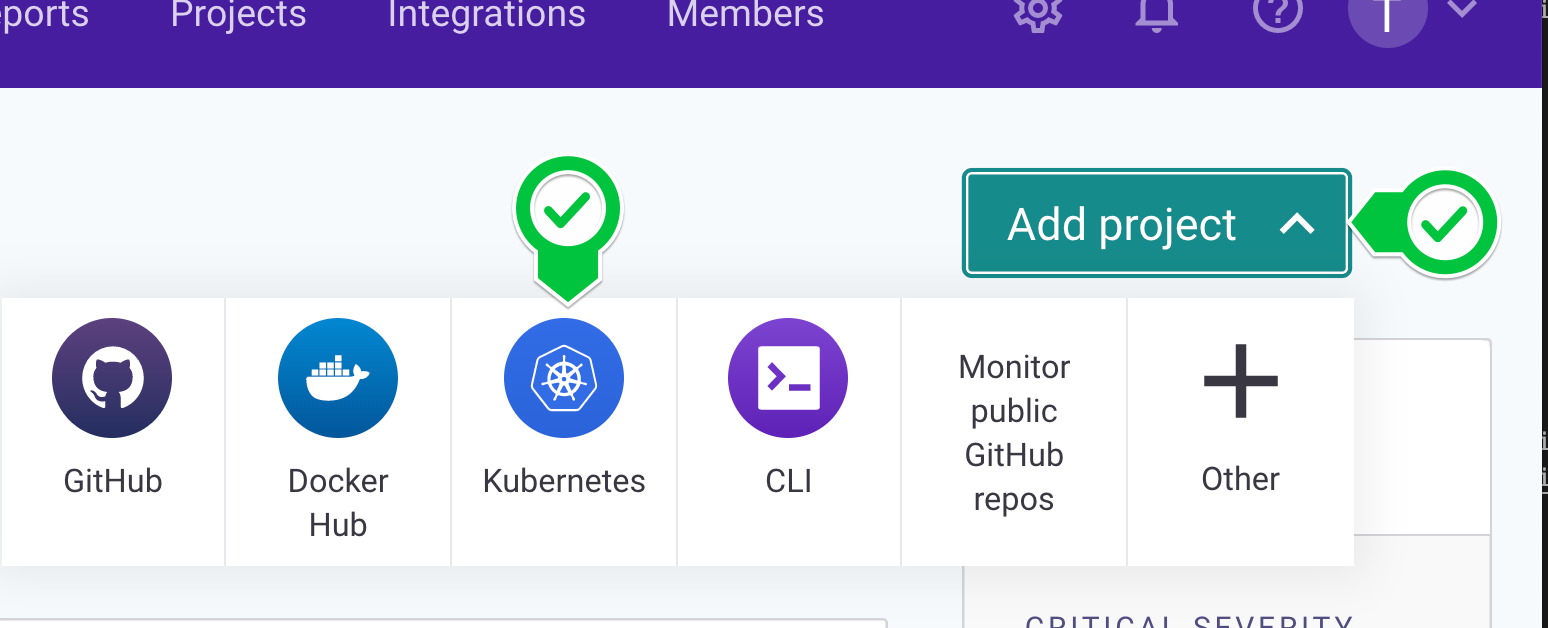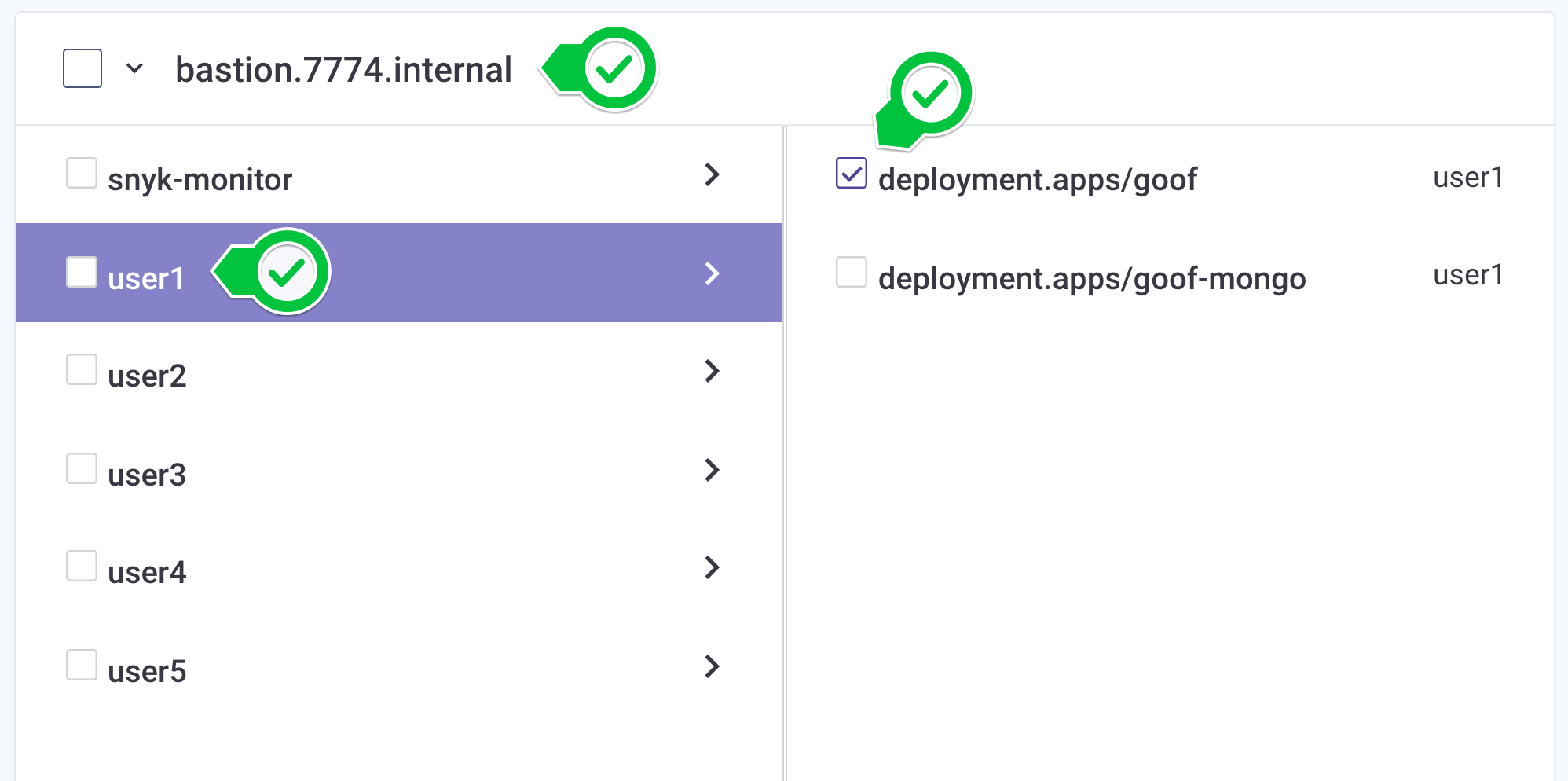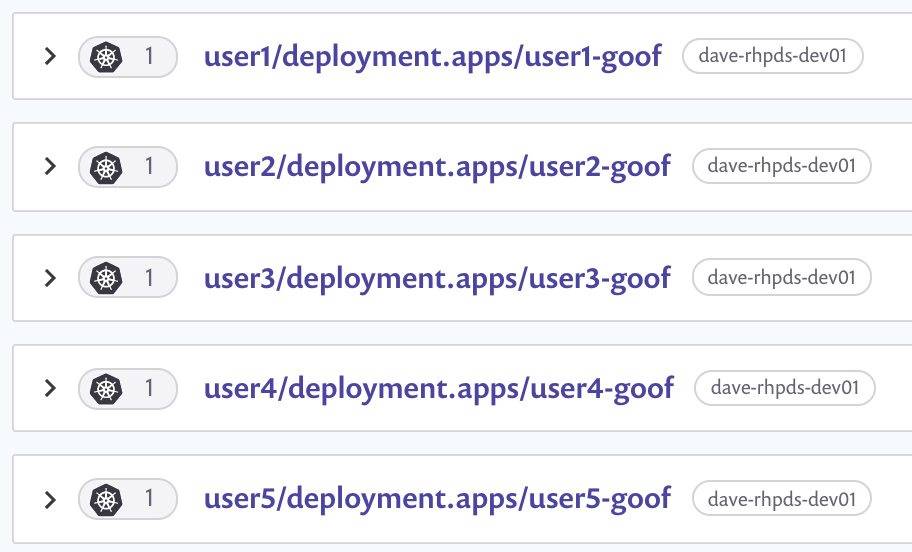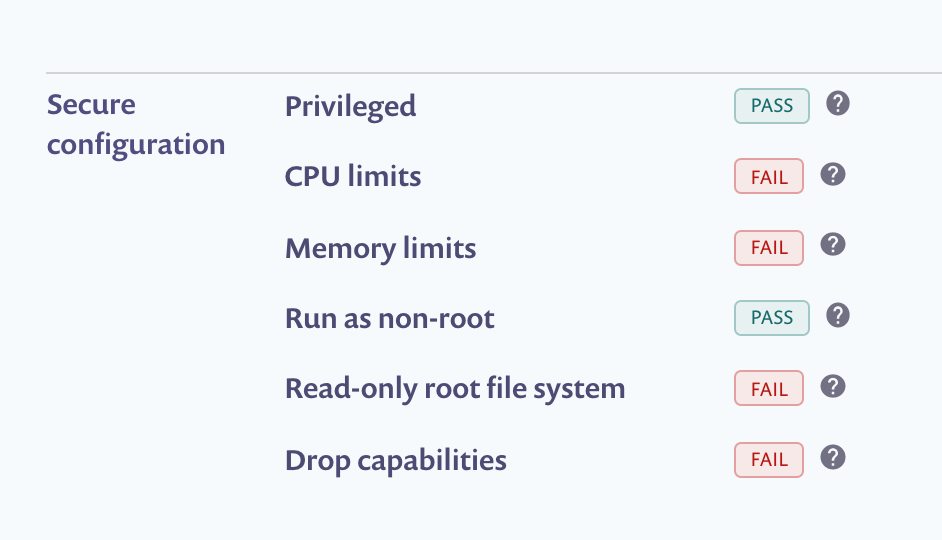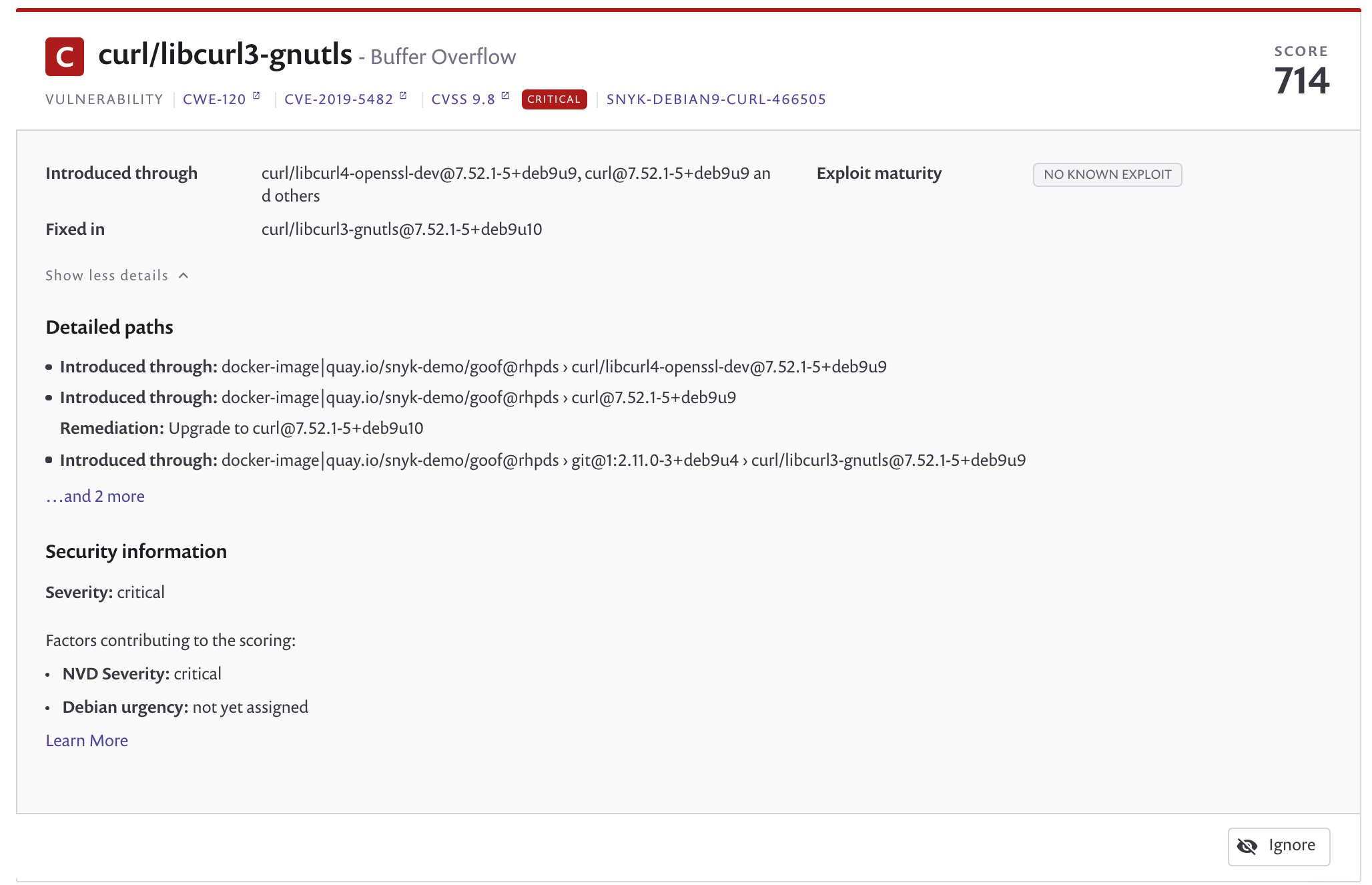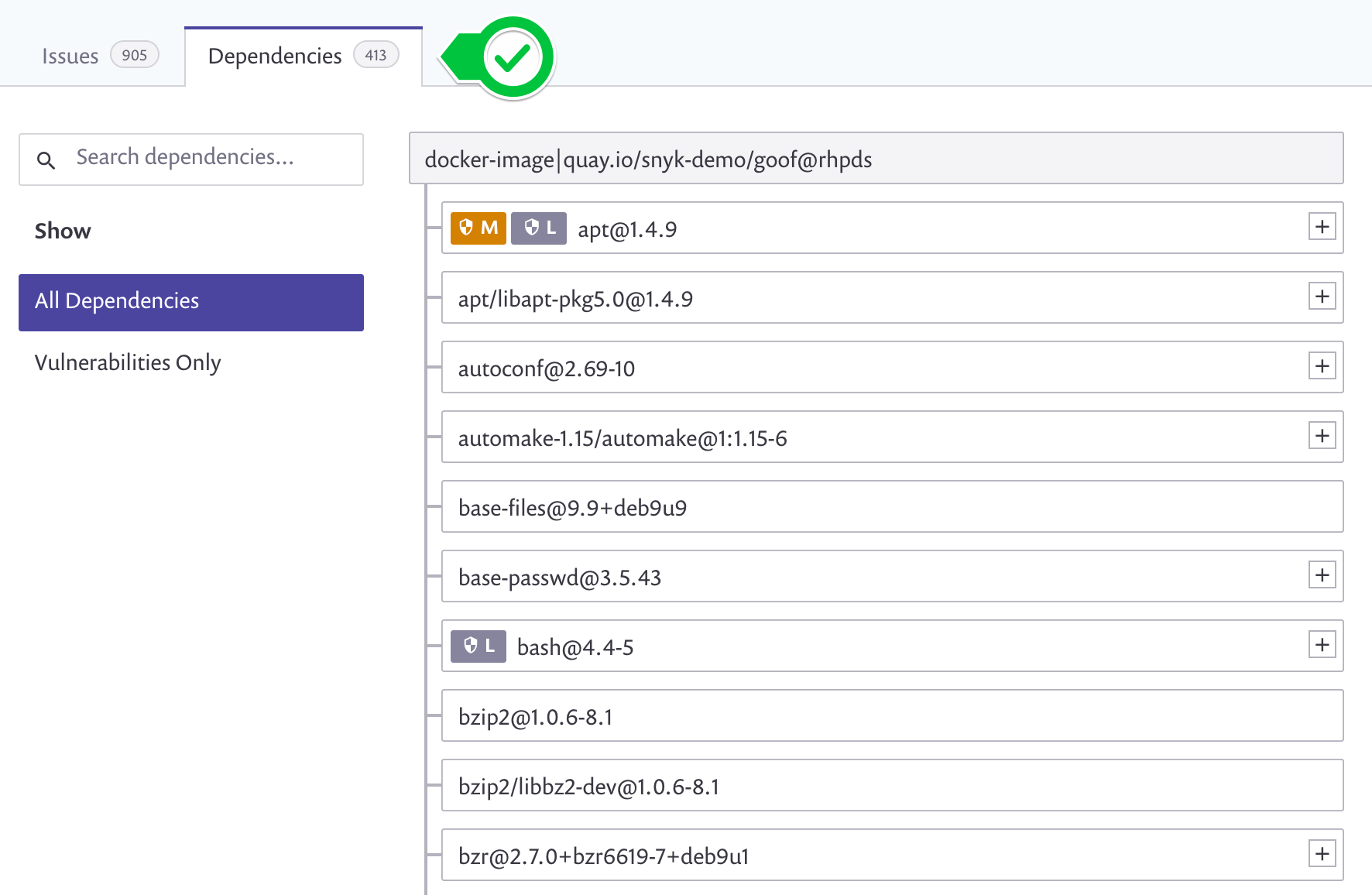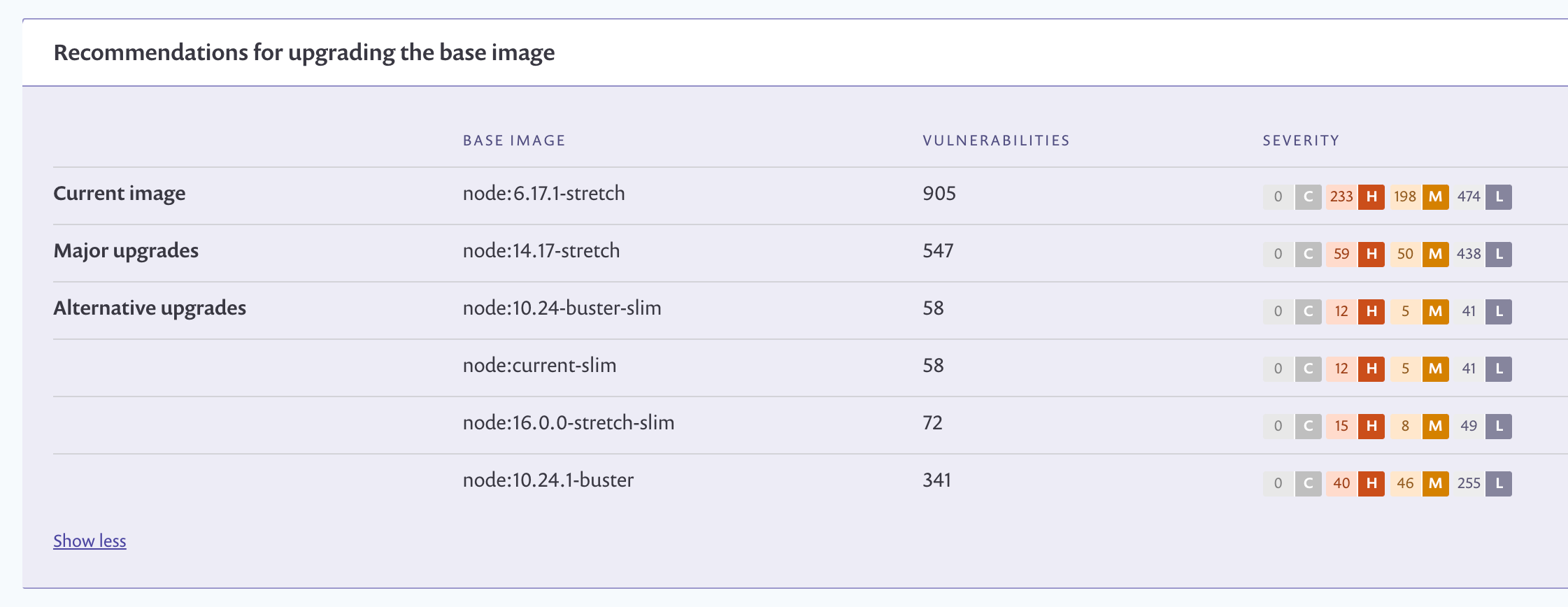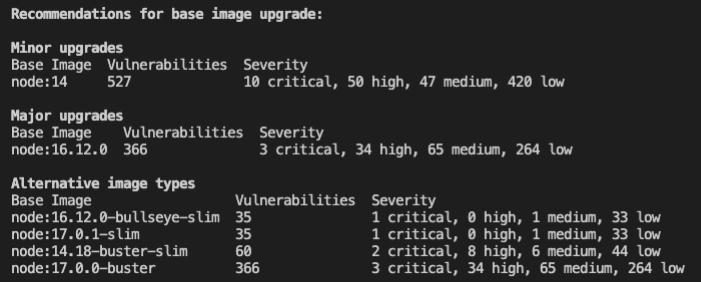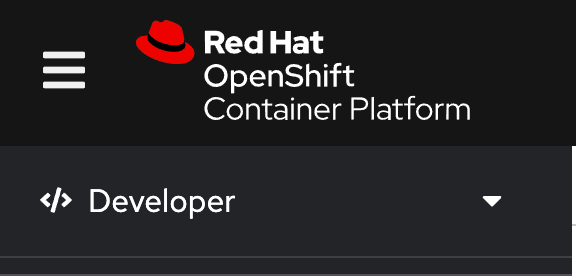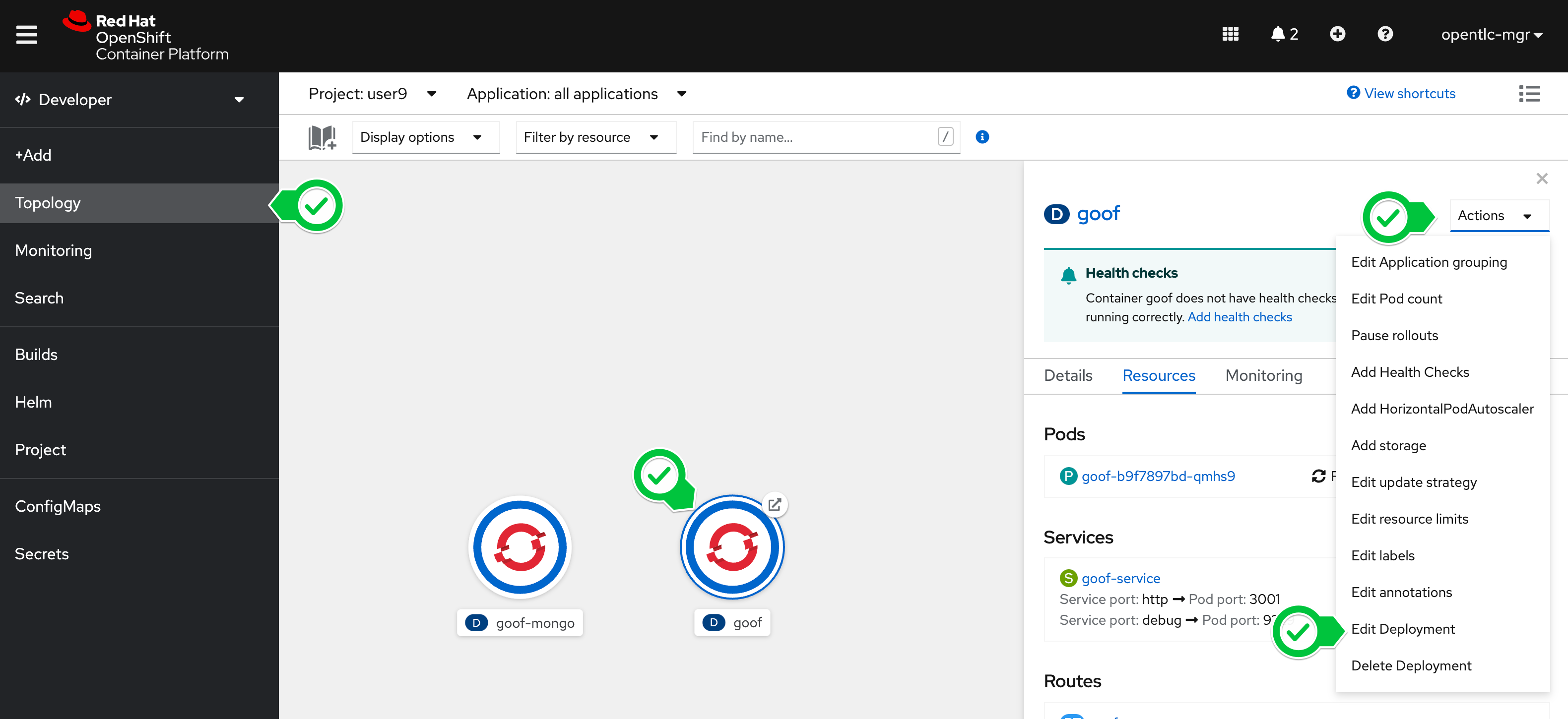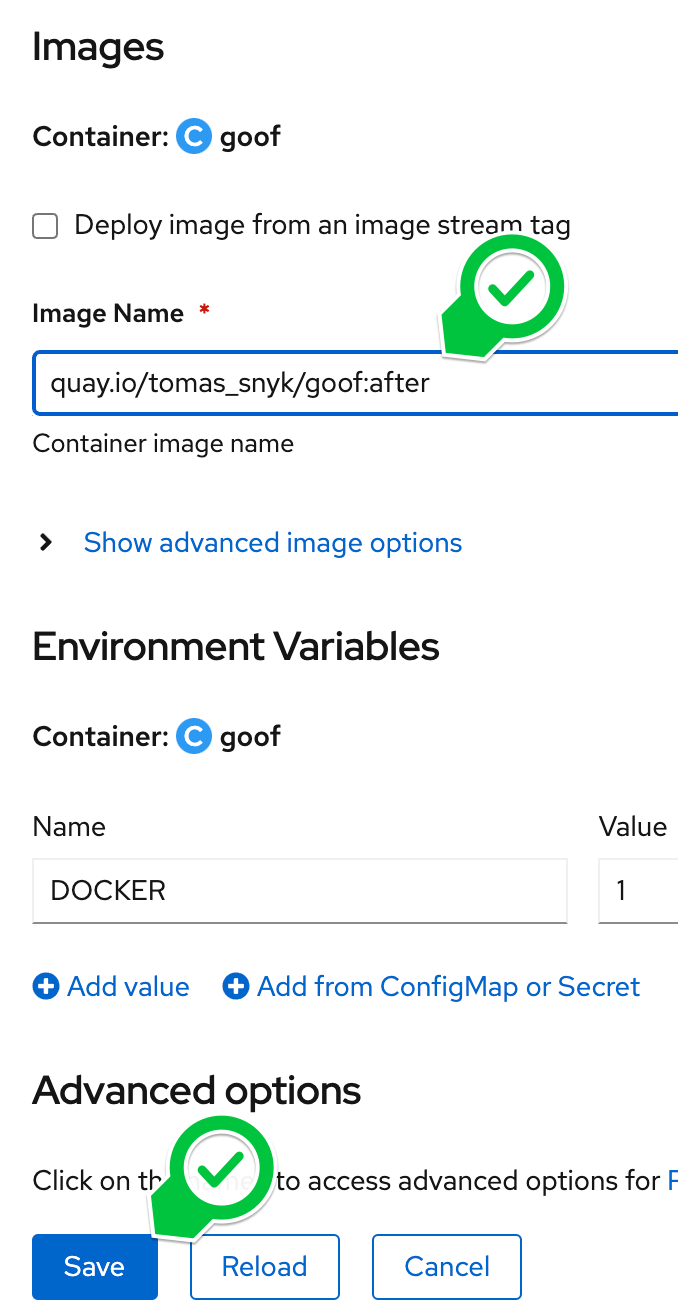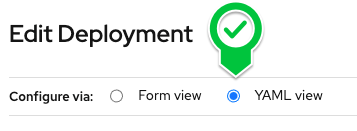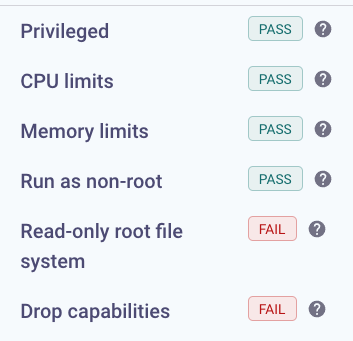Welcome! This workshop demonstrates how to use Snyk Container and Snyk Infrastructure as Code to identify security and configuration risks in a sample application deployed into OpenShift. In this developer-centric workshop, you'll need to be familiar with some common tools, described later.
The steps below guide you through:
- Importing an OpenShift workload into Snyk for scanning and monitoring,
- Reviewing the security and configuration scan results in the Snyk UI,
- Finding and applying a more secure base image using Snyk’s upgrade guidance,
- Securing the Goof application's deployment configuration within OpenShift.
Note: This workshop is intended to be used with the Red Hat Partner Demo System (RHPDS).
Note: For this workshop your facilitator invited you into the RHPDS Workshop organization in Snyk. To complete the workshop on your own, you need a Snyk account with the Business plan and your own cluster to deploy the Kubernetes integration into.
You were assigned credentials to a Project in an OpenShift cluster. Complete the workshop in your assigned Project. Your Project includes:
- A deployment of Snyk's vulnerable Goof application, and
- A running Snyk Controller deployed by the Snyk Operator.
Goof is externally exposed using a Route. Navigate to Networking > Routes > Goof to interact with it.
Note: Not using RHPDS? The Snyk Monitor needs Secrets for the Integration ID and registry credentials as shown in the Snyk Operator Installation Docs. For this workshop, RHPDS creates these for you.
The Snyk Controller integrates with OpenShift to test running workloads and identify security vulnerabilities and configuration risks that might make the workload less secure. It communicates with the OpenShift API to determine which workloads are running, scans them, and reports results back to Snyk. The following workloads can be scanned:
- Deployment
- DeploymentConfig
- ReplicaSets
- DaemonSets
- StatefulSets
- Jobs
- CronJobs
- ReplicationControllers
- Pods
To import workloads into Snyk, users can select workloads in the Snyk UI, or import them automatically using annotations. These options are as described in Adding Kubernetes workloads for security scanning.
You must have joined the RHPDS Workshop Snyk Organization to continue.
First, start by importing the Goof Deployment into Snyk so we can review the application's security and configuration scan results.
- Sign in to Snyk, then switch to the RHPDS Workshop Organization under the Red Hat Group.
- Navigate to the Projects tab.
- Click the Add Projects button, then select the Kubernetes tile.
- In the workload selection screen, find the OpenShift cluster named by your facilitator, select the user assigned to you, then select the Goof workload for import.
- After the import completes, find the Snyk project imported from your assigned OpenShift project. Each imported Snyk project item is named according to its OpenShift metadata as follows: Project/kind/name.
- Expand the project list to see a list of the images used by the workload. For workloads with multiple images, the top row aggregates the count of vulnerabilities across all images.
- Click the workload link to see details around the security posture of the workload configuration. For information on what we test for, visit viewing project details and test results.
- Return to the Projects Tab, now click the image name to view a list of its vulnerabilities. Scroll down to see the list of issues, ordered by Snyk's Priority Score. Each card represents a vulnerability in the image, and displays:
- The issue type, and informative links to the Snyk Intel DB, CVE, and CWE
- The direct and/or indirect dependency that introduced the vulnerability,
- Details on the path and possible remediation,
- If available, relative importance from the Linux distribution's upstream tracker.
Workload configuration information contributes to the vulnerabilies' Priority Score, based on the idea that a vulnerability in a workload that is poorly configured scores higher than the same vulnerability in a well configured one. For more information visit Snyk Priority Score and Kubernetes.
- Switch to the Dependencies Tab to see the container's Dependency Tree.
- Return to the Issues Tab. To give us a head start remediating the vulnerabilities in Goof, Snyk presents base image upgrade guidance grouped by how likely they are to be compatible with our application. We'll learn how to interpret these recommendations in Part 2.
In Part 2 we'll use this upgrade guidance, as well as explore the Snyk Infrastructure as Code configuration scan, to apply a more secure base image to Goof and address some of the configuration risks identified by the scan.
A benefit of using Snyk Monitor to monitor running workloads is that once imported into the UI, Snyk continues to monitor the workload, re-testing for issues as new images are deployed and the workload configuration changes.
In this section, you use Snyk Container's Base Image Upgrade Guidance and Snyk Infrastructure as Code (IaC) to address the security and configuration issues identified in Part 1 of the workshop. Let's begin!
- Sign in to Snyk, then switch to the OpenShift Workshop Organization under the Red Hat Group.
- Navigate to Snyk Account Settings and create a Service Account Token. Name it after your assigned user and save it as an environment variable. You’ll need it later.
SNYK_TOKEN=<<your_snyk_token>>- Authenticate the Snyk CLI using the Snyk Token.
snyk auth $SNYK_TOKENThis token will stop working after this workshop. You can continue using your Free Snyk account after the workshop by re-authenticating the Snyk CLI to your Personal Organization.
In Part 1 we saw vulnerabilities present in the Goof application. To remediate them, you'll re-build the image with a more secure base image. This code for Goof is available at https://github.com/snyk-partners/goof-rhpds.
- Clone the repo locally, and change into the application directory.
git clone https://github.com/snyk-partners/goof-rhpds
cd goof-rhpds- Now build the image that runs Goof in OpenShift using the following command:
Ensure you set the Environment Variable $QUAY_USER as instructed in the pre-requisites document.
docker build -t quay.io/$QUAY_USER/goof:before .- Verify the image built by listing the built container images.
docker imagesDevelopers can use the Snyk CLI to get vulnerability information and base image upgrade guidance.
- Scan the image by running the following command.
snyk container test quay.io/$QUAY_USER/goof:before --file=Dockerfile
- When the scan completes, review the list of vulnerabilities. There are quite a few! If available, Snyk will recommend other potential base images to help you build your container with as few vulnerabilities as possible.
Snyk recommends less vulnerable base images grouped by how likely they are to be compatible:
- Minor upgrades are the most likely to be compatible with little work,
- Major upgrades can introduce breaking changes depending on image usage,
- Alternative architecture images are shown for more technical users to investigate.
Open Source vulnerabilities are disclosed daily, so the recommendations you see may differ as the Snyk vulnerability database is constantly updated. This example shows upgrade recommendations as of the day of writing.
- To apply a new base image, open the Dockerfile and replace, or comment out, the old base image with a new one. In this example, we’ll use node:14.16.1.
#FROM node:14.1.0
FROM node:14.16.1
RUN mkdir /usr/src/goof && mkdir /tmp/extracted_files
COPY . /usr/src/goof
WORKDIR /usr/src/goof
RUN npm update && npm install
EXPOSE 3001
ENTRYPOINT ["npm", "start"]- When ready, save the changes. Now build and push the image to Quay.io, using a new tag.
You will need to have logged in to Quay.io to push images.
docker build -t quay.io/$QUAY_USER/goof:after .
docker push quay.io/$QUAY_USER/goof:afterIn the next step we’ll re-deploy the application to OpenShift.
With the new Container Image built and in Quay, we'll update the deployment in OpenShift to reference our new, safer, image.
- Sign in to OpenShift, and switch to the Developer Perspective if you're not automatically brought there.
- Navigate to Topology -> Goof -> Actions -> Edit Deployment to change the deployment settings.
- Change the Image Name that the Deployment references to your new image on Quay.io, then press Save.
-
Wait until OpenShift replaces the old Container with the new one. You can track the progress in the Topology view by clicking on Goof.
-
Back in Snyk, find your Project and verify that your workload is now using a less vulnerable image. Compare your new image to the old one,
snyklabs/goof.
In Part 1 we also saw that Goof was poorly configured. With Snyk Infrastructure as Code, you can test configuration files directly from the CLI.
- Back in your Terminal, scan for IAC issues in the Deployment file with the Snyk CLI by running the following command.
snyk iac test manifests/- Review the IAC scan results. For each file, Snyk displays a list of vulnerabilities—sorted by severity, where each is detailed as follows:
- A clear heading line - specifying the issue that has been detected, the severity of that issue and the Snyk Policy Id for that particular issue.
- Location - the property path within the configuration file at which the issue has been identified.
We'll use this information to guide changes to the deployment configuration in OpenShift.
- Back in OpenShift, return to the Goof Deployment, then Edit Deployment settings as before. This time, switch to the YAML view.
- Modify the deployment to add limits for the CPU and Memory, as shown in the snippet of YAML below. Press Save when finished.
resources:
limits:
cpu: 250m
memory: 100Mi
requests:
cpu: 100m
memory: 100Mi- Back in Snyk, find your Project and verify that your workload has better configuration!
That's it! If you want, continue until all the configuration checks called out by Snyk are green.
You reached the end of this workshop! This is one example of how Snyk guides developers through remediating vulnerabilities. There is much more we didn’t show, from our CI/CD integrations, API, and integrations into SCM and the Quay Registry.
If you’re interested in other Snyk capabilities, let us know how much you liked this workshop and we'll work on adding it more in for future sessions! You can also subscribe to and get started with Snyk from the Red Hat Marketplace.


